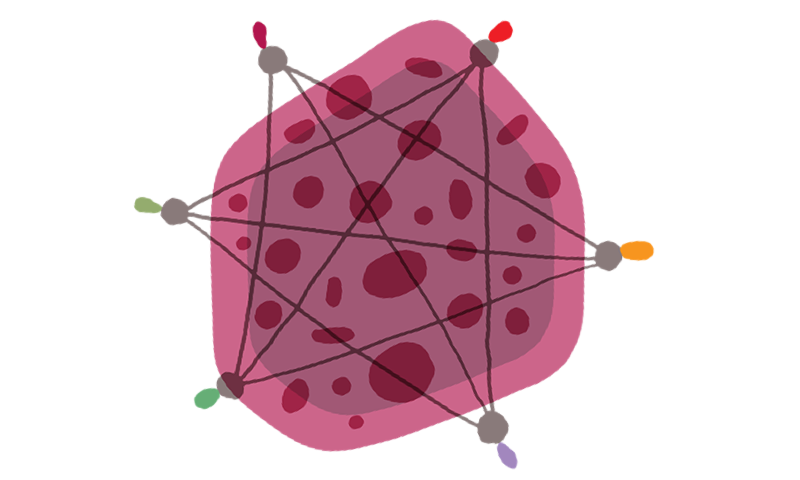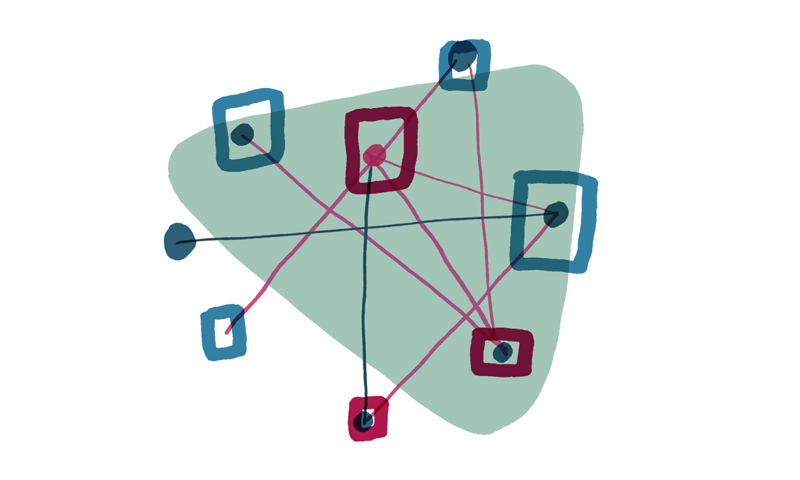Nesta’s definition of the Collaborative EconomyUsing internet technologies to connect distributed groups of people to make better use of goods, skills and other useful things
More than a “touchy-feely movement”: The collaborative economy

This morning, as part of the Unusual Suspects Festival, I went along to Nesta for the launch of their new report Making Sense of the Collaborative Economy.
Kathleen Stokes, along with other Nesta researchers Emma Clarence, Lauren Anderson and April Rinne have been surveying participating business and organisations as well as the wider UK population. Their report looks at who and what is involved in the collaborative economy and how it can be supported and managed.
There are five traits which define this system and four pillars of activity which are outlined in this slide from Kathleen's presentation:

The Internet has driven collaboration in two ways:
1) allowing people to communicate in a peer–to–peer way
2) allowing people to communicate while they transact, including updates on progress and rating each other
Collaborative consumption = internet + trust + idling capacity + Commons + distributed networks, says @Kathleenstokes. #collcons @nesta_uk
— @CorissaNunn September 2nd, 2014 08:44

Kathleen’s presentation was followed by Rachel Botsman, author of What's Mine is Yours: How Collaborative Consumption is Changing the Way We Live calling in to present via Skype and a panel debate featuring:
- Debbie Wosskow, Founder and CEO of Love Home Swap
- Dax Lovegrove, Director of Sustainability & Innovation at Kingfisher
- Matthew McStravick, Founder and CEO of Echo, the economy of hours
- Anna Brook, Head of Communications at JustPark

Some of my quite loose thoughts I've been considering from the discussion, and my key takeaways/ interesting stats from the report:
- During the Q&A an audience member raised the question of whether the recent years of commercial monopoly could have been a blip or temporary. She used the example of farming communities discussing sharing equipment at the local pub. So, is sharing simply a natural behaviour for communities which can now only be taken to a global scale through technology?
- The collaborative economy is young and and certainly driven by technology. The report notes that these borrowing and lending behaviours are indeed not new, but 73% of the businesses surveyed by Nesta need webpages to operate, and 34% use apps for smartphone or tablet. 64% of them were started since 2010.
- According to the Nesta's research, 25% per cent of UK adults used internet technologies to share assets/resources over the last year. Within this, there seems to be a lack of diversity, and a level of exclusivity in so much as the kind of people who participate are those who own and can lend assets such as their cars, homes and driveways. As @DanFJones72 put it on twitter "often linking young white cash-rich time-poor with older white asset-rich"
- Is trust really the crux of this economy, or is it more about more (and more diverse) consumers recognising the benefits?
- Sustainability and helping the environment is not a selling point for consumers, instead it is convenience, choice and empowerment. In Debbie Wosskow's view it is, "more than a touchy-feely movement" and simply good business. An AB test on the Love Home Swap website showed that her customers didn't respond any more positively to messages about the environmental benefits - they care more about having a good experience and saving some cash on their holidays.
The collaborative economy is said to be worth £9 billion a year by 2025. So what's next?
Public confidence in #collcons needs self- & state regulation and big brand partnerships says @rachelbotsman for @nesta_uk research launch
— @DanFJones72 September 2nd, 2014 09:04
@jocasebourne The equity structure of #collcons ventures needs to change so power and wealth is distributed amongst members (not just vc's)
— @rachelbotsman September 2nd, 2014 10:10
Have a look at the rest of the debate on #CollCons, and follow along with the Unusual Suspects festival on #UnusualSuspects.
Download the full report on Nesta’s website.
Image credits: Nesta, Jenni Parker and Echo
Continue reading
TimeOut MxM 10
September's only just started but we've already filled our plate with loads of great things to do this month. We're improving our copywriting skills, lear...
TimeOut MxM 9
This week we bring you a selection of design events in London, some thoughts on being better at user research and digital strategy, cult sci-fi novels, th...
Hiring: Full-stack Developer
We’re looking for a full-stack developer to join our growing team in New York.
At Made by Many we work with clients to conceive, design and build new pro...


